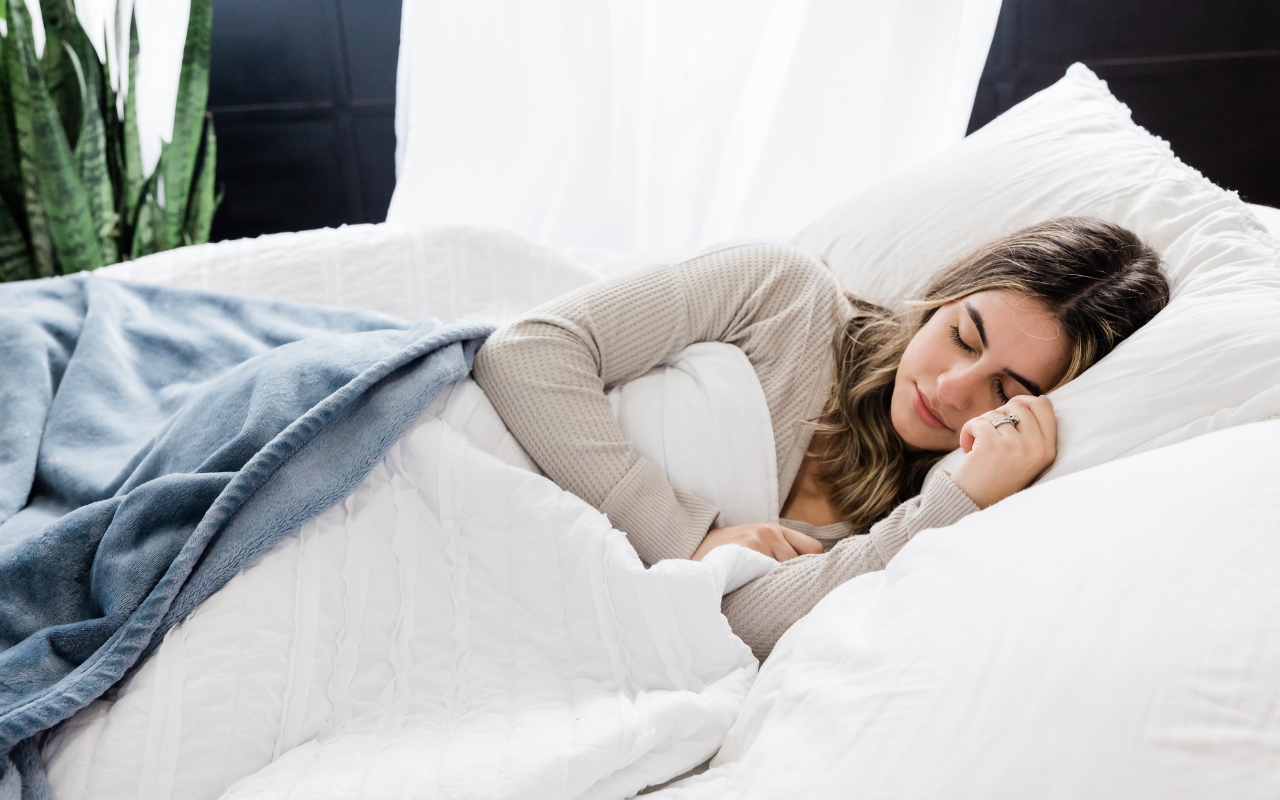A good night’s sleep often feels like a luxury in today's fast-paced world. We juggle work, family, and social obligations, usually neglecting essential aspects of our health. One such aspect is exercise, a powerful yet underutilized tool that can significantly improve sleep quality and overall well-being. This article explores the intricate relationship between physical activity and sleep, delving into scientific insights and practical tips to help you harness the full benefits of exercise.
The benefits of exercise extend far beyond weight management and cardiovascular health. Regular physical activity can help regulate your circadian rhythm, reduce stress and anxiety, and promote restorative sleep. The National Sleep Foundation’s 2022 Sleep in America Poll highlights a worrying trend. Despite the well-documented advantages of exercise, a significant portion of the population is not reaping its sleep-related benefits due to insufficient physical activity.
The Science Behind Exercise and Sleep
Physical activity is crucial in regulating your circadian rhythm—your body’s natural sleep-wake cycle. Engaging in moderate to vigorous exercise helps synchronize this rhythm, making falling and staying asleep easier. According to the National Sleep Foundation, nearly all Americans engage in light activities like slow walks or household chores. However, higher-intensity activities provide more substantial benefits and are less common. The foundation’s poll revealed that 36% of Americans get less than the recommended 2.5 hours of moderate to vigorous exercise per week, and 45% report no vigorous exercise.
Exercise impacts sleep through various mechanisms. Firstly, physical activity increases body temperature, and as your body cools down post-exercise, it signals to the brain that it is time to sleep. Additionally, exercise can alleviate stress and anxiety—common culprits of poor sleep—by diverting your focus to the physical task. This mental break can create a more tranquil state conducive to sleep.
Finding Time to Exercise
Incorporating exercise into your daily routine might seem daunting, especially for those with sedentary jobs or busy schedules. However, you don’t need to become a fitness fanatic overnight. Small, consistent efforts can yield significant results. If you spend most of your day behind a desk, consider taking work breaks to take a brisk walk or perform a 10-minute workout. These short bursts of activity can elevate your heart rate and improve sleep quality by promoting more profound, restorative sleep.
Every step counts. Regular exercise, regardless of intensity, can enhance your sleep. However, the timing of your workouts can influence specific aspects of sleep. For instance, morning exercise can help you sleep longer at night, while evening workouts might require careful timing to avoid disrupting your sleep onset.
Morning Exercise: A Sleep Enhancer
Morning is an ideal time to boost both sleep potential and cardiovascular conditioning. Studies indicate that people who exercise at 7 am tend to sleep more hours at night, experience deeper sleep cycles, and spend a more significant portion of the night in restorative sleep stages. Exercising outdoors in the morning provides the added benefit of natural sunlight exposure, which further helps regulate circadian rhythms.
Morning workouts, including weight lifting, can also contribute to a quicker sleep onset at night. This is because morning exercise supports the natural nighttime drop in blood pressure, a crucial factor for achieving restorative sleep. Moreover, the endorphin rush from morning exercise can energize you for the entire day, enhancing overall productivity and mood.
The Perks of Midday Movement
Afternoon workouts offer significant sleep benefits as well. During the afternoon, body temperatures are naturally higher, making muscles more pliant and efficient. This can improve exercise performance and reduce the risk of injury. An afternoon workout raises your body temperature for four to five hours post-exercise, gradually decreasing as bedtime approaches. This decline in temperature cues your brain that it’s time to sleep.
Evening Exercise: Timing is Key
While some believe that evening workouts can hinder sleep, this isn’t always true. The key lies in timing and intensity. Vigorous cardio workouts increase body temperature and heart rate, potentially delaying sleep onset if done too close to bedtime. To mitigate this, aim to complete your workout one to two hours before sleep. This allows your body temperature to drop and gives endorphins time to subside, fostering a more relaxed state conducive to sleep.
According to a study highlighted by the Mayo Clinic, there is no one-size-fits-all approach to exercise timing. Preferences vary, and what works best for you may differ from others. Experimenting with different workout times can help identify the optimal schedule for maximizing sleep quality.
Exercise and Mental Health: A Symbiotic Relationship
The interplay between exercise, mental health, and sleep is profound. Physical activity can reduce stress, anxiety, and depression, creating a positive feedback loop that improves sleep quality. Mental health issues can disrupt sleep, and poor sleep can exacerbate mental health symptoms. Thus, taking care of your mental health through exercise can lead to better sleep and vice versa.
Exercise provides a break from daily worries, shifting focus to physical exertion. Whether you’re paying attention to your swimming stroke or coordinating with a teammate, this shift in focus can create a mental respite that promotes relaxation. The Sleepstation underscores that exercise-induced mental relaxation can make falling and staying asleep easier.
Tailoring Exercise to Combat Sleep Disorders
Different sleep disorders can benefit uniquely from regular physical activity. For instance, insomnia—a condition characterized by difficulty falling or staying asleep—can improve with consistent exercise. Studies have shown that regular physical activity can alleviate insomnia symptoms and enhance overall sleep quality. If you suffer from insomnia, incorporating light exercise into your routine could be transformative.
Exercise can also be beneficial for those diagnosed with obstructive sleep apnea (OSA). OSA often results in daytime sleepiness due to disrupted nighttime sleep. Regular physical activity has been shown to improve daytime alertness and reduce symptoms of OSA. While weight loss can aid in managing OSA, studies have indicated that exercise can improve apnea symptoms without significant weight change.
Restless legs syndrome (RLS), another condition that disrupts sleep, can also be mitigated with exercise. Aerobic activities, yoga, and specific exercises have been found to reduce RLS symptoms and promote better sleep. Regular physical activity during the daytime can lead to a more restful night.
Optimizing Your Sleep Environment
While exercise is pivotal in enhancing sleep, other factors contribute to a restful night. Creating a sleep-friendly environment is essential. Consider using room-darkening shades, earplugs, or fans to eliminate disturbances. Avoid prolonged use of light-emitting screens before bedtime, as blue-green light can hinder melatonin production, the hormone responsible for sleepiness.
Incorporate calming pre-sleep activities such as taking a warm bath, practicing relaxation techniques, or engaging in gentle yoga. These practices can help signal to your brain that it’s time to wind down, making it easier to transition into sleep. For more tips on creating a conducive sleep environment, visit the Mayo Clinic.
Practical Steps to Incorporate Exercise
Start with small, manageable steps to integrate exercise into your daily routine. Here are some practical tips to get moving:
- Set Realistic Goals: Begin with attainable exercise goals. Starting small, whether it's a 10-minute walk or a quick home workout, can build consistency.
- Use Work Breaks Wisely: Utilize short breaks during your workday to engage in physical activity. A brisk walk or simple stretching can invigorate you and enhance sleep quality.
- Experiment with Timing: Test different workout times to find what best suits your body and schedule. Morning, afternoon, and evening exercises can each offer unique benefits.
- Mix Up Activities: To stay motivated, keep your exercise routine diverse. Incorporate various activities such as walking, jogging, yoga, and strength training.
- Stay Consistent: Regularity is key. Aim to make exercise a consistent part of your daily regimen to experience its full sleep-enhancing benefits.
- Combine with Outdoor Time: Whenever possible, exercise outdoors. Natural light exposure helps regulate circadian rhythms and improve sleep quality.
Conclusion
Exercise is a powerful tool for enhancing sleep and overall well-being. By understanding the science behind its benefits and incorporating physical activity into your daily routine, you can significantly improve the quality of your sleep. Finding the proper exercise regimen can lead to more restful nights and energized days, whether it's a morning jog, an afternoon workout, or an evening yoga session.
By making small, consistent changes, you can harness the full benefits of exercise and enjoy a better quality of life. For more information on how exercise can improve your sleep, visit National Sleep Foundation, Mayo Clinic, and Sleepstation.
Let’s get moving to get better sleep and embrace a healthier, more energized life.










